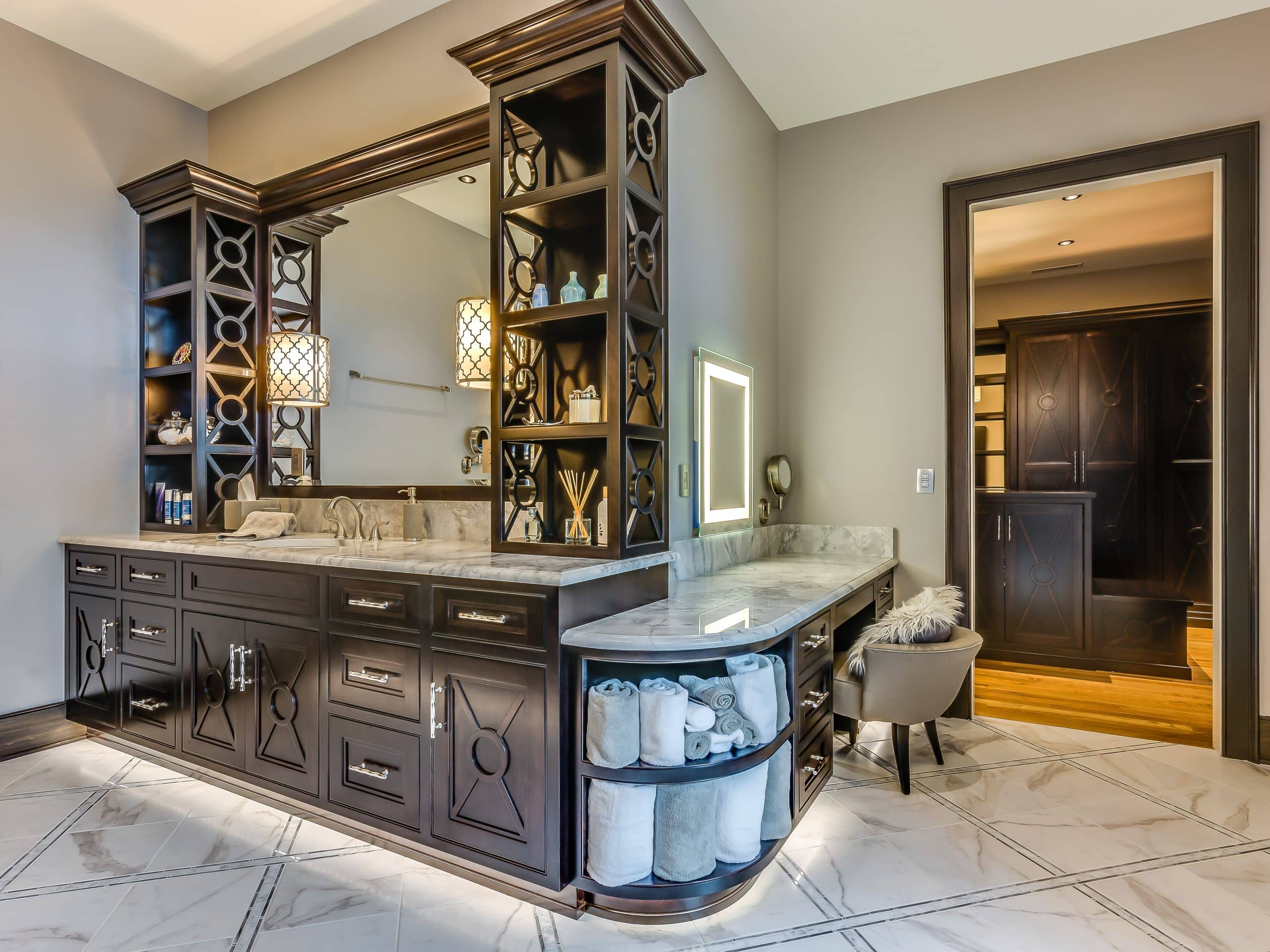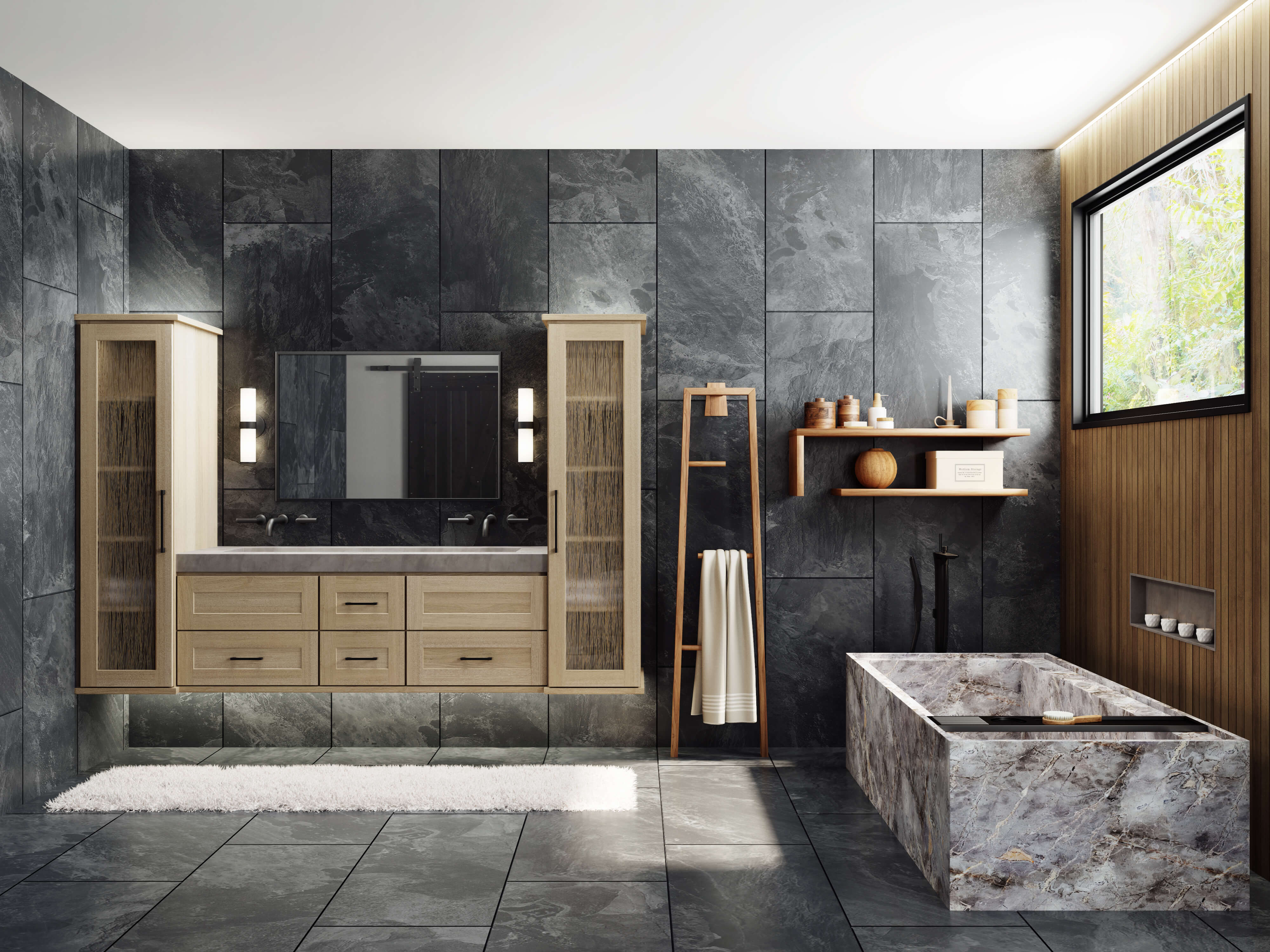Choosing the Right Bathroom Vanity Hutch Cabinet: Bathroom Vanity Hutch Cabinets

A bathroom vanity hutch cabinet is a stylish and practical addition to any bathroom, offering ample storage space and a touch of elegance. Choosing the right one for your bathroom involves careful consideration of several factors, including the available space, your storage needs, and your personal style.
Measuring and Planning the Space, Bathroom vanity hutch cabinets
Before purchasing a bathroom vanity hutch cabinet, it’s essential to measure the available space carefully. Consider the following:
- Height: Measure the height from the floor to the ceiling, ensuring sufficient clearance for the cabinet and any overhead fixtures.
- Width: Determine the available width, taking into account the width of the vanity and any surrounding objects.
- Depth: Measure the depth of the space, ensuring enough room for the cabinet to open and close comfortably.
Once you have these measurements, you can start browsing for vanity hutch cabinets that fit your space.
Features to Consider
Bathroom vanity hutch cabinets come in various styles and features, offering different storage options, lighting, and hardware. Here are some features to consider:
- Storage Options: Look for cabinets with shelves, drawers, and compartments to accommodate all your bathroom essentials, including towels, toiletries, and medications.
- Lighting: Consider built-in lighting, such as LED strips or vanity lights, to enhance visibility and create a more inviting atmosphere.
- Hardware: Choose durable and stylish hardware, such as knobs, pulls, and hinges, that complements the overall design of your bathroom.
Materials and Their Pros and Cons
Bathroom vanity hutch cabinets are typically made from various materials, each with its own advantages and disadvantages. The following table compares the pros and cons of some common materials:
| Material | Pros | Cons |
|---|---|---|
| Wood | Natural beauty, durability, warmth | Can be susceptible to moisture damage, requires regular maintenance |
| Metal | Durable, moisture-resistant, modern look | Can be cold to the touch, prone to scratches |
| Glass | Elegant, adds light and spaciousness | Fragile, can be difficult to clean |
| Acrylic | Durable, moisture-resistant, easy to clean | Can be prone to scratches, may not have the same natural look as wood |
Installing a Bathroom Vanity Hutch Cabinet

Installing a bathroom vanity hutch cabinet is a straightforward process that can enhance the functionality and aesthetics of your bathroom. With the right tools and a bit of patience, you can successfully install your new cabinet and enjoy its benefits.
Steps Involved in Installing a Bathroom Vanity Hutch Cabinet
The installation process involves several steps, each contributing to a secure and functional installation.
- Prepare the Installation Area: Ensure the area where the cabinet will be installed is clean and free of obstructions. This involves clearing away any existing fixtures or decorations and removing any debris.
- Assemble the Cabinet: Some cabinets arrive pre-assembled, while others require assembly. Follow the manufacturer’s instructions carefully to assemble the cabinet correctly.
- Mark the Wall for Mounting: Use a level to mark the wall where the cabinet will be mounted. Ensure the marked area is level and centered according to your desired placement.
- Attach Mounting Brackets: Attach the mounting brackets to the wall using screws or anchors, depending on the wall material. Make sure the brackets are securely fastened to the wall.
- Install the Cabinet: Carefully lift the cabinet and align it with the mounting brackets. Secure the cabinet to the brackets using the provided hardware.
- Connect Plumbing and Electrical: If the cabinet includes a sink or lighting fixtures, connect the plumbing and electrical components according to the manufacturer’s instructions and local building codes.
- Install Hardware and Accessories: Once the cabinet is securely mounted, install any additional hardware or accessories, such as handles, shelves, or mirrors.
Tools and Materials Needed for Installation
Having the right tools and materials on hand will ensure a smooth installation process.
- Measuring Tape: For accurate measurements and marking the wall.
- Level: To ensure the cabinet is installed level and straight.
- Pencil: For marking the wall and making notes.
- Screwdriver: For attaching brackets and securing the cabinet.
- Drill: For drilling pilot holes and attaching brackets to the wall.
- Screws or Anchors: Depending on the wall material.
- Wrench: For connecting plumbing fixtures.
- Pliers: For tightening or loosening nuts and bolts.
- Safety Glasses: For eye protection during drilling and installation.
- Work Gloves: For protecting hands during installation.
Troubleshooting Common Installation Issues
Installation issues can arise, but understanding common problems and their solutions can help resolve them quickly.
- Uneven Installation: If the cabinet is not level, re-check the mounting brackets and ensure they are securely fastened to the wall. Use a level to adjust the cabinet until it is perfectly level.
- Loose Cabinet: If the cabinet feels loose, double-check the screws or anchors holding the mounting brackets to the wall. Tighten any loose screws or replace them if necessary.
- Plumbing Leaks: If you encounter leaks, check the connections for any loose fittings or damaged pipes. Tighten loose fittings or replace damaged pipes as needed.
- Electrical Problems: If you experience electrical issues, turn off the power to the circuit and check the wiring connections. Ensure the wiring is properly connected and secure.
